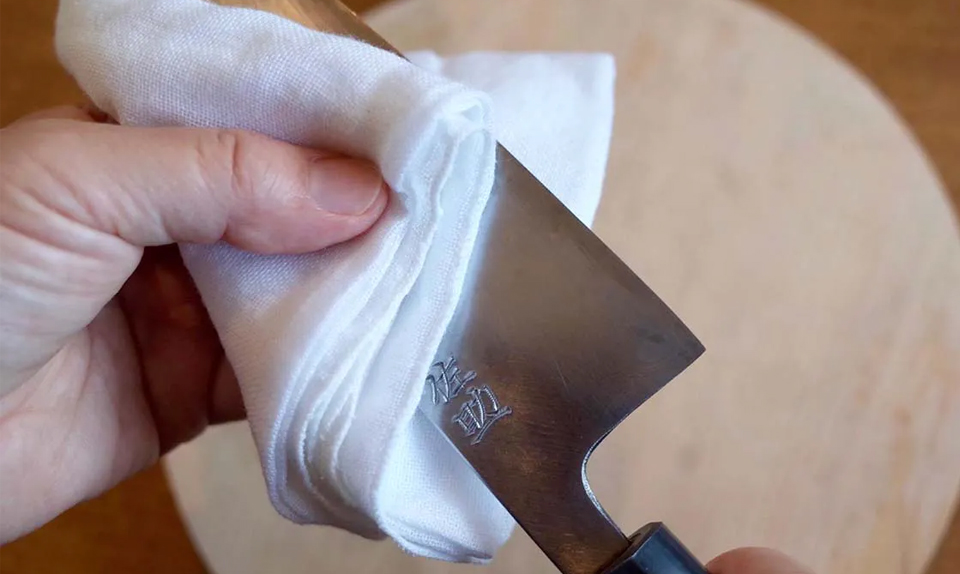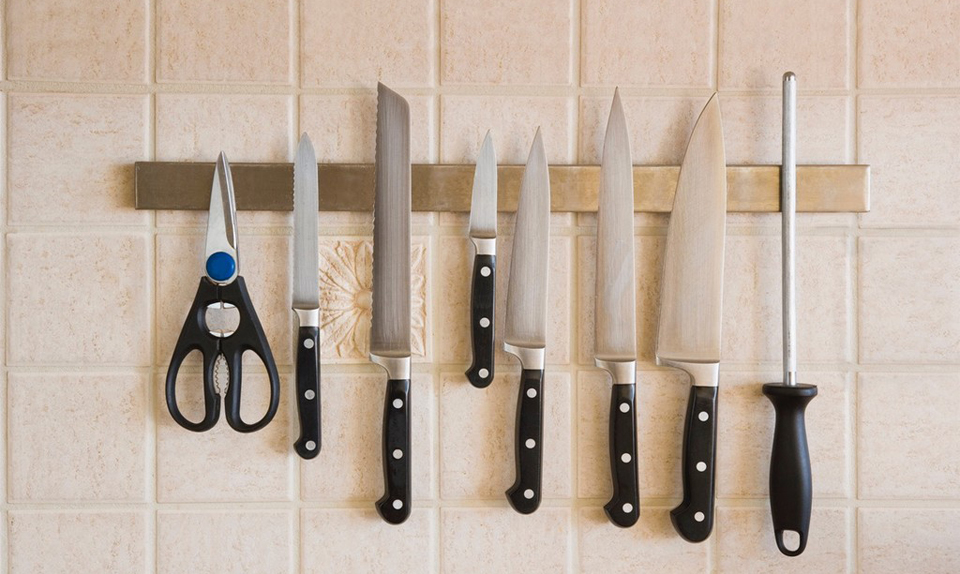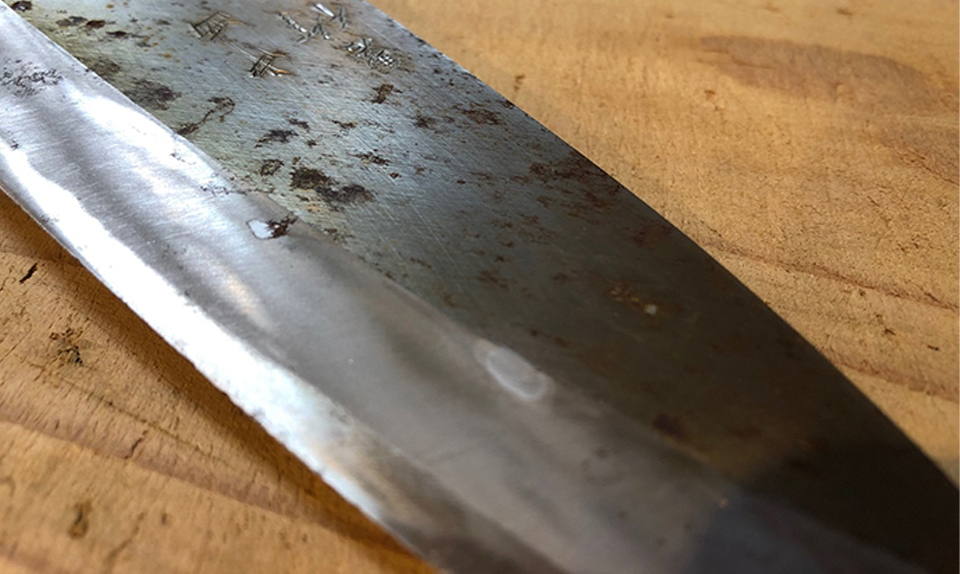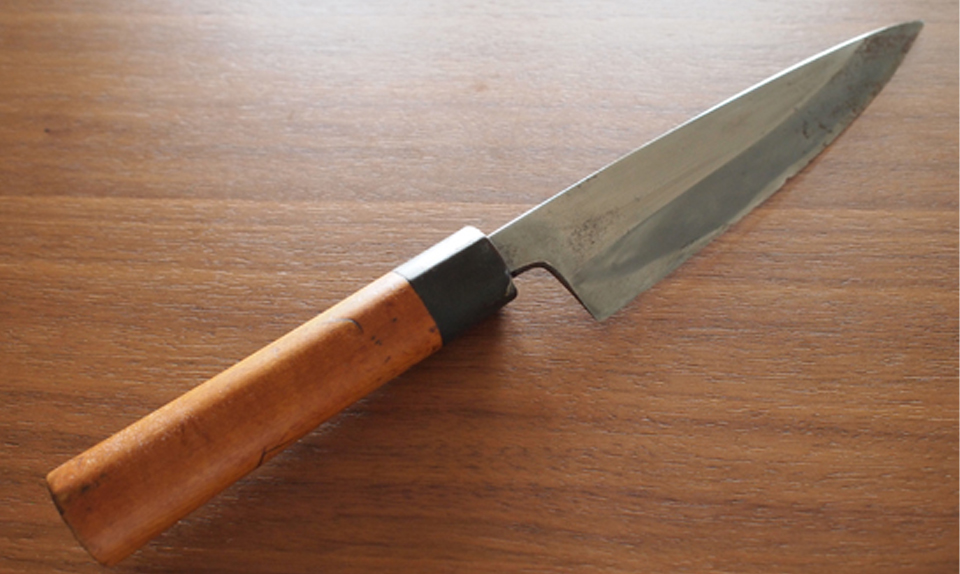Kitchen knives are tools, and like all tools, they are inevitably affected by the passage of time during use. To ensure they perform well over the long term, daily care and maintenance are essential.
Caring for your knife is not a difficult task. With a little practice, you can keep it sharp for a long time — making your time in the kitchen not only easier but also more enjoyable and meaningful.
When people think about knife maintenance, sharpening with a whetstone often comes to mind. However, in this article, we will introduce another method of maintenance aside from sharpening.
For most home kitchens, sharpening about once a month is usually enough to maintain a good edge. But in addition to sharpening, proper storage and handling are just as important — let’s take a closer look!
1. After daily cooking
1.1. Washing
Try to wash the knife right after you finish using it. This is because salt and acid contained in food ingredients cause rust.
You can also prevent odors from transferring to other ingredients by making it a habit to wash the knife every time you cut a different ingredient.Use mild detergent and a sponge to wipe the knife you've just used.
.jpg)
Polishing the surface with a soft sponge or a piece of daikon radish can also remove rust and make the surface smoother and sharper.
However, you should not clean knives in a dishwasher. This is because the chemical action of dishwasher detergent makes rusting more likely than usual, and the strong water jets can cause the blade to hit surrounding dishes, leading to wear and damage.
1.2. Drying
Another important point is to dry the knife immediately after washing to prevent rust.
Wipe off the water with a dry towel, place the knife in a knife box or on a kitchen knife rack, and let it air dry.

Never use heat drying methods to speed up the drying process, as exposing the knife to fire or high temperatures is equivalent to re-tempering the blade.
This can seriously affect the sharpness and overall properties of the blade.
1.3. Strorage
If you're using a regular stainless steel knife, storing it in a well-ventilated area is usually enough to prevent rust.
For Japanese kitchen knives, which are often made from Hagane carbon steel, those crafted from rust-resistant materials like AUS, VG, or Silver steel only require washing and drying after use.
However, for blades made from more rust-prone steels such as Aogami or Shirogami, it's important to apply a thin layer of cooking oil to the blade after drying to prevent rust.
Before using the knife again, be sure to rinse it lightly.

If you don't plan to use your kitchen knife for an extended period, apply a bit of protective oil to the blade, wrap it in newspaper, and store it in a dry place.
2. So what should we do when rust appears?
2.1 Surface rust

If you notice rust on the surface, remove it as soon as possible using a commercially available rust remover or a mild cleanser.
Minerals in tap water are essentially small amounts of metal, and if these metal particles remain on the blade’s surface, they can occasionally cause localized rusting.
These rust spots are often small and easy to miss, but if left untreated, they can penetrate deeper into the blade and develop into pinhole-like corrosion.
If you notice even a slight sign of rust, make sure to remove it thoroughly.
2.2 Rust on the cutting edge

If rust appears on the cutting edge, it's dangerous to try removing it with cork, sponge, or similar materials.
Instead, place the knife on a whetstone and sharpen the edge to remove the rust.
In the case of composite materials such as alloy steel, extra care is needed — the cutting edge is often made from a more rust-prone core material, which makes it more susceptible to corrosion than the outer surface.